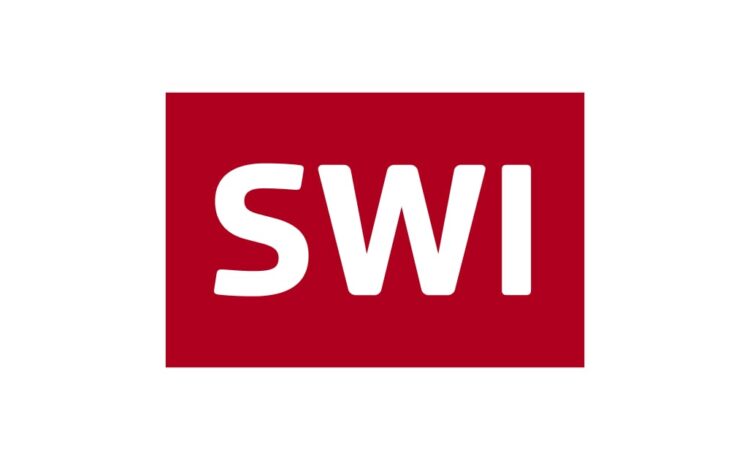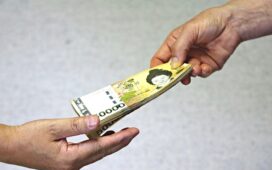(Bloomberg) — Asian equities were poised to open cautiously on Thursday as Wall Street showed signs of exhaustion following a surge for risk assets sparked by US-China trade talks.
Asian equity futures for Japan and Australia fell while those for mainland China and Hong Kong rose. A gauge of US-listed Chinese companies climbed 1.2% on Wednesday. The S&P 500 rose 0.1%, while the Nasdaq 100 gained 0.5%, helped along by an advance for Nvidia Corp that wiped 2025 losses for the chipmaker. Tencent Holdings Ltd.’s revenue grew at its fastest pace in more than three years.
An index of the dollar rose Wednesday, reversing selling pressure earlier in the session as Bloomberg News reported the US is not working to include currency policy pledges in trade accords. Gold fell 2.3% to a one-month low Wednesday. Oil also fell after a government report showed US crude inventories rose the most in two months.
The moves reflected a note of caution to a week marked by a sharp rebound in risk assets fueled by progress in trade talks and economic resilience. The nascent US-China trade truce, a UK pact and high-profile Gulf deals have reassured investors, yet lurking in the background is the worry that stocks get so extended that they’re vulnerable to surprises.
“As trade tensions ease, investors are pivoting back to fundamentals, but they may not like what they see,” said Mark Hackett at Nationwide. “The market has raced from oversold to overbought in record time. That limits near-term upside unless we see a clear re-acceleration in growth.”
In further signs of thawing trade tensions, China on Wednesday suspended curbs on exports of rare earths and other goods and technologies for military use. The move follows an agreement by the Asian nation and the US to temporarily lower tariffs levied against each other’s products and will last for 90 days, China’s Ministry of Commerce said in a statement.
Elsewhere, traders will be watching for further moves in the won after a report that the US and South Korean governments discussed currency policies this month. The won jumped more than 1% and neighboring currencies, including the Japanese yen, also rose.
Data set for release in the region includes trade for India and Indonesia, money supply for South Korea, and employment for Australia.
Interest-Rate Bets
Selling in US government debt across the curve sent the 10-year yield seven basis points higher to around 4.54%, the highest in a month, as Federal Reserve rate-cut bets receded.
TD Securities joined several other Wall Street banks in predicting the Fed will cut rates later than previously anticipated, and swap contracts ceased fully pricing in two quarter-point moves by year-end.
Fed Bank of Chicago President Austan Goolsbee said that it’s important for central bankers not to respond to day-to-day volatility in equities and economic policy pronouncements, noting that economic data remain steady for now. Fed Vice Chair Philip Jefferson said tariffs and related uncertainty could slow growth and boost inflation this year, but monetary policy is well positioned to respond as needed.
“Fed vice chair Jefferson’s speech today leans a little dovish after a run of more hawkish commentary from Fed officials, signaling that the Fed leadership is (sensibly) wary of calling the all-clear on downside risk even after US-China de-escalation,” said Krishna Guha at Evercore.
The modest advance for US stocks on Wednesday covered up a broadly down day for most sectors. Big tech was the key exception, alongside a mix of individual names. Boeing Co. rallied on its largest-ever deal after Qatar Airways placed an order for long-range jets during a visit to Doha by Donald Trump.
To Rick Gardner at RGA Investments, the stock-market rally has legs.
“The trade negotiation with China was seemingly the toughest one on the docket, and the idea that there has been this much progress on the negotiations over such a short period of time, suggests that a resolution may be on the horizon,” he said.
Gardner says that what’s been remarkable about the rebound from April lows is the leadership of the tech sector — which was not leading the market in the early months of 2025 before the tariff situation escalated.
“We anticipate tech may continue to lead this market, as the sector stands to benefit from easing trade tensions and as investors once again resume their excitement over the promise of artificial intelligence,” he noted. “Even if we see a continued economic slowdown, the stock market may have already priced that in during the April selloff.”
Some of the main moves in markets:
Stocks
- S&P 500 futures fell 0.1% as of 7:33 a.m. Tokyo time
- Hang Seng futures rose 0.2%
- S&P/ASX 200 futures fell 0.4%
Currencies
- The Bloomberg Dollar Spot Index fell 0.1%
- The euro was little changed at $1.1183
- The Japanese yen was little changed at 146.62 per dollar
- The offshore yuan was little changed at 7.2098 per dollar
- The Australian dollar was little changed at $0.6430
Cryptocurrencies
- Bitcoin was little changed at $103,505.39
- Ether was little changed at $2,601.62
Commodities
- West Texas Intermediate crude fell 0.5% to $62.85 a barrel
- Spot gold rose 0.2% to $3,182.65 an ounce
This story was produced with the assistance of Bloomberg Automation.
©2025 Bloomberg L.P.





